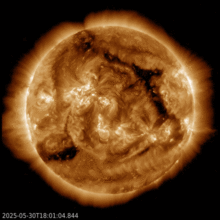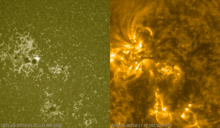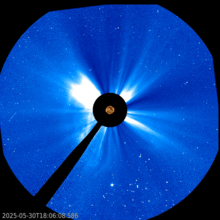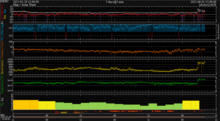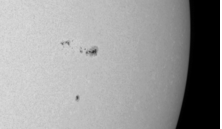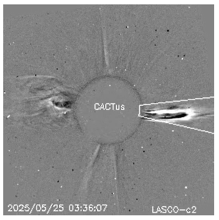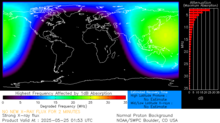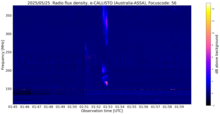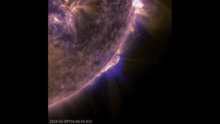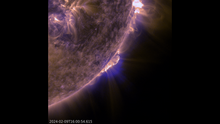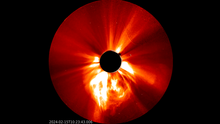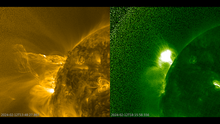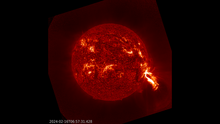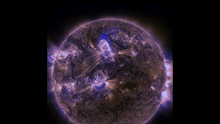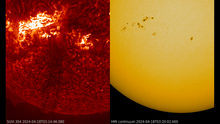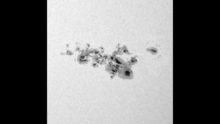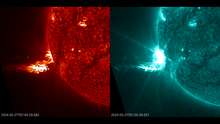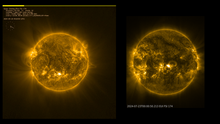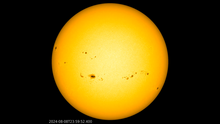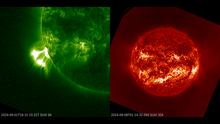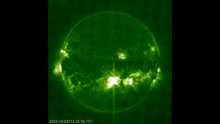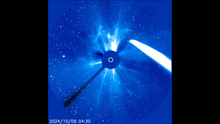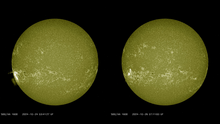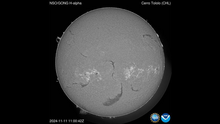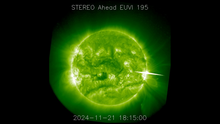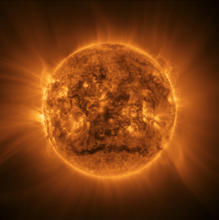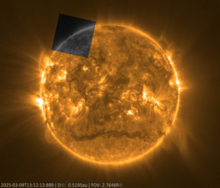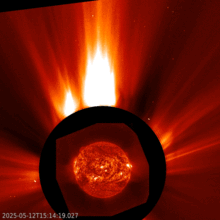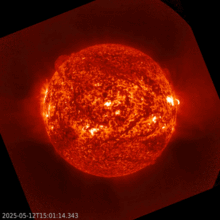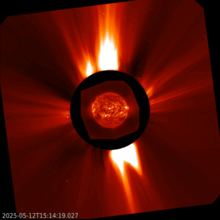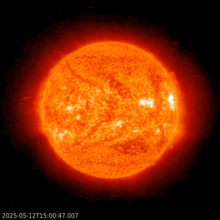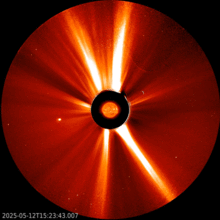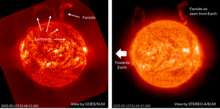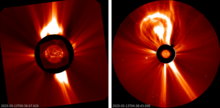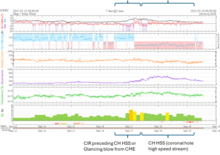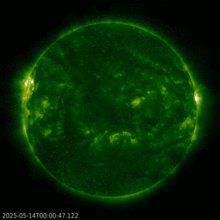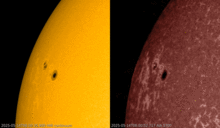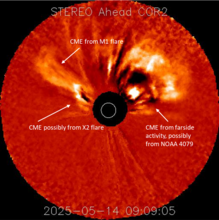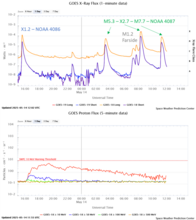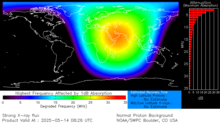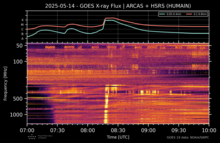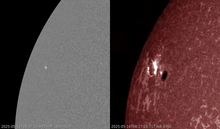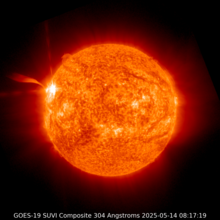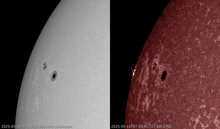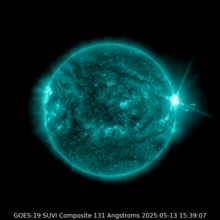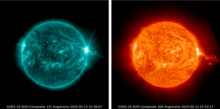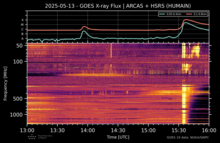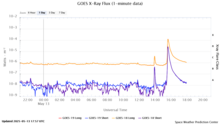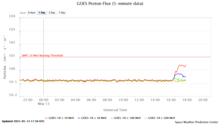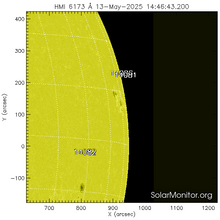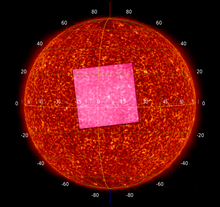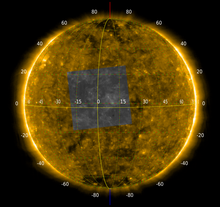news
Submitted on 2025-05-31
A severe geomagnetic storm is currently (1 June) in progress following the arrival of an interplanetary coronal mass ejection launched early on 31 May. (UPDATED)
Submitted on 2025-05-25
NOAA 4098 surprized space weather forecasters with an X1.1 flare on 25 May.
Submitted on 2025-05-23
An overview and movie of some spectacular solar and space weather events in 2024 is available at the STCE's solar cycle highlights webpage.
Submitted on 2025-05-22
Do you remember the highest resolution image of the Sun ever made? It dates from March 2022 and showed mesmerising details of the solar atmosphere. We decided to do it again. And now we even combined images from two telescopes!
Submitted on 2025-05-19
A very long filament erupted late on 12 May. The associated coronal mass ejection may have delivered a glancing blow late on 16 May.
Submitted on 2025-05-14
The trailing portion of NOAA 4087 has been the source of several strong solar flares today, including an X2.7 flare.
Submitted on 2025-05-13
Small sunspot group NOAA 4086 was the source of a surprize X1.2 flare on 13 May.
Submitted on 2025-05-13
The Journal of Space Weather and Space Climate (JSWSC) is seeking a new Editor-in-Chief!
Submitted on 2025-05-12
May 12, 2020 - The 3 telescopes of the Extreme Ultraviolet Imager (EUI) onboard Solar Orbiter opened their doors to capture images of the Sun.
May 12, 2025 - Almost 1 million images of the Sun have been made and put in the EUI data treasure chest to be used for groundbreaking research.
Submitted on 2025-05-12
The submission of abstracts to all ESWW2025 sessions is open. All abstracts can be submitted following the instructions on the ESWW webpage. Extended deadline: May 22.
Pages
Zircon - This is a contributing Drupal Theme
Design by
WeebPal.

